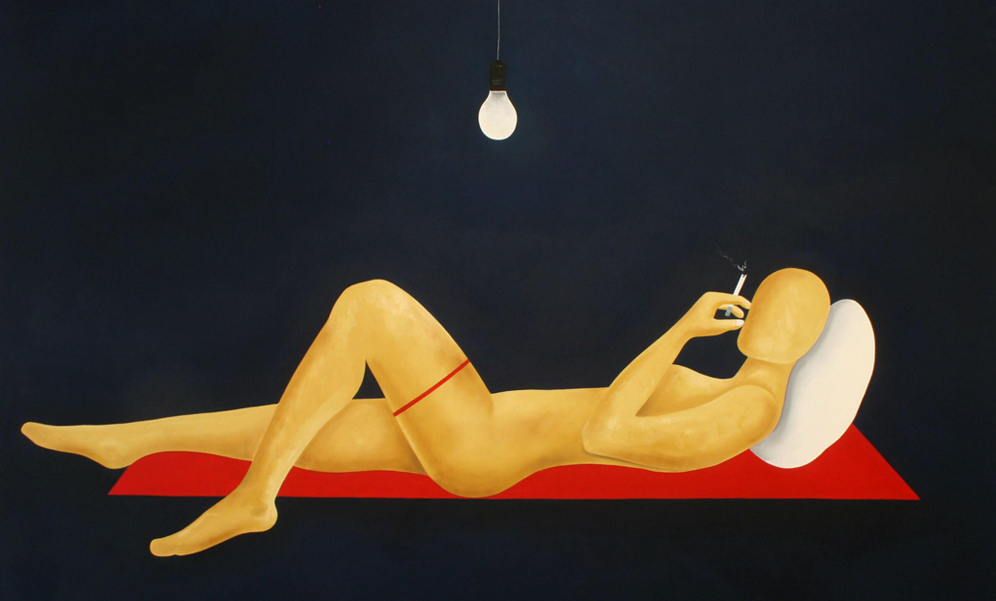Much has been said about Colombian artists, yet at the same time, very little. Much because they are talked about, some more than others, and in the international market, these artists are recognized. Little because it is never enough. There is always more to say. This is the case with Colombian artist María Fernanda Cuartas.
The Artist
María Fernanda Cuartas is a Colombian painter, born in Bogotá on September 8, 1967. She grew up in the capital of the Valle del Cauca region, Cali. And perhaps this duality has brought her more success than expected. Her work focuses on social issues, gender equality, and the dignity of women.
Cuartas’ works have traveled around the world: the United States, Colombia, Argentina, Italy, Vienna, Barcelona, Venice, Dubai, and Mexico.

Cuartas has received various accolades worldwide. Twice, the European Communities Artists’ Library has included her in the book of the 100 most important contemporary artists in the world. In 2011 and 2012, Art in America magazine included her in its guide to the world’s most important artists.
She is a creator who strengthens the environment of her female characters. Her works have been praised for highlighting the power of her representation of women. The strength of her female characters lies in the fact that they have no faces.
Cuartas received painting training from teachers Bernardino Labrada, Guillermo Ruiz, and Fernando Polo. It was during this time that she began exploring her artistic language and the problems confronting society.
Tastes differ in genres – María Fernanda Cuartas –
But the truth is, there is so much more to learn about this woman. Perhaps, it’s not enough to do her justice. With this in mind, we started discussing topics that were important to us, and we believed to her as well. One of those topics was the role of women in the artistic field, specifically the challenges it entails.
María Fernanda made it clear that throughout her life, women in art have faced many obstacles. In the 1970s, women were very limited in their participation in all areas of life within art, and if they were pregnant, they were not allowed to be artists.

In the 19th century, women began to “gain” social and economic rights, and the number of female artists grew. However, this meant going against the predominant female model that society approved of.
Later, several illustrators and photographers emerged. This new medium had no sexist restrictions or formal education. These women were financially independent and recognized for their professional achievements.
Today, the role of women in art is one of visibility, with significant artistic proposals.
In her life as an artist, the most satisfying aspect is the impact her work has on people and critics, and the message she manages to create.
We must say that if we admired her work before, we now have a slightly more personal connection with Cuartas. This opportunity to speak with her enveloped us in her aura.

Laura Viera A: What is art to you?
M.F.C.: To me, art is an important part of the formation of our history; through it, we know where and how we have evolved. Art is a senator of society. Art transcends borders.
Laura Viera A: What is kinetic art?
M.F.C.: Kinetic art is changing or moving art.
Laura Viera A: If you didn’t dedicate yourself to art, what would you do?
M.F.C.: I would be a simultaneous translator. I’ve always loved languages, just like my mother. I studied in a bilingual school.
Laura Viera A: How did you start?
M.F.C.: I started by loving instruments, and materials like ceramics, clay, and theater works, and in school, I stood out with my posters, notebooks, drawings, and organization.
I understood her work better after speaking with her. We began with the fact that everything related to human behavior, both inside and outside of society, is a continuous stimulus and source of inspiration. Also, the woman, in all her aspects, especially in her most vulnerable moments, is a driving force for creation.
Laura Viera A: Throughout your career, what has been the most difficult and the easiest?

M.F.C.: For me, the most difficult was getting recognized in my hometown, due to not having formal schooling. In the end, that was not an obstacle for me. I insisted and left the country to start exhibiting in the United States. I started in galleries, and over time, I exhibited in museums. Honestly, nothing was easy. Everything had a difficult path, but it was ultimately satisfying.
Laura Viera A: What would you change?
M.F.C.: I would change the lack of support for new talents and the lack of interest in developing new proposals for artists who are not part of the “inner circle.”
Laura Viera A: What did you feel the first time you presented your works?
M.F.C.: The first time I presented my work was in Cali, the city that saw me grow and train as an artist. It was really difficult because I didn’t have the attendance I expected… but I knew that over time, I would create my own stamp and identify my personality in my work to create transgressive art for an invisible society.
Transforming Visions
Cuartas assured me that both in the artistic world and on a personal level, there are still many things she wants to achieve.
She is aware that, even though she has received many recognitions, awards, and exhibitions, she wants to break through the conscious mind of the viewer. She wants to transform their view of the most vulnerable acts.
Being included in the list of the 100 contemporary artists was her greatest satisfaction as an artist. Being named “Marca País” came after her decoration by the Congress of the Republic. When she was named one of the 100 leaders in Colombian society by Revista Gerente in 2013, she was truly excited and surprised.
One of the aspects that impacted us most was that in her works, there was always an absence of faces. There’s a very simple reason for this: to allow the viewer to enter into dialogue with the artwork and be the one to complete or reveal the hidden aspects of her work.

Laura Viera A: Do you prefer painting or sculpture? If you could only choose one, which would you pick?
M.F.C.: Painting captivates me more. In fact, I’ve always practiced it since childhood. I think it’s more universal. I couldn’t define if I’d stick with one or the other; I think in each, I find different emotions.
Laura Viera A: Do you think art unites people? Does it help? Can it generate change?
M.F.C.: Art has different meanings for people, given that there is a variety of art forms, whether visual or performing. For some, a piece is something marvelous and they consider it art; for others, it’s just a bunch of junk. Art influences people to the extent that they can identify with it. Art is influential when the artist seeks to make the viewer understand their work, whether it’s poetry, theater, painting, music, or sculpture.
María Fernanda made it clear to me that art in Colombia is on the same level as international art. The same proposals are worked on in terms of their themes.
Similarly, Colombian artists have the same concerns as artists from any other country, which is why national artists are becoming more universal.
It wasn’t like this before, as art used to be very provincial. She briefly pauses and emphasizes the fact that she considers Colombian art to have become more snobbish.
On the other hand, regarding support, she believes there’s more commitment at the national level with calls and art fairs where artists can present their new proposals.
Laura Viera A: What is the hardest part of dedicating yourself to art?
M.F.C.: Living off art is difficult. Artists must look for job alternatives. We keep exhibiting and painting even if we don’t get paid. Getting subsidies, winning grants, teaching, and many other alternatives to make a living.
Ending the Conversation
We end the conversation for now… but she tells me that for anyone wanting to be an artist, the most important thing is always proposing something new. Original proposals are key. You need to seek calls to make yourself known. Having a reference is valid because we’ve all had one, but don’t copy.

I believe her works stand out by presenting differently what the viewer wants to see, and what they need to understand. That’s why they’re so hard to forget; they leave an impact on those who enjoy them. A portal opens in terms of the sensitive and emotional.


